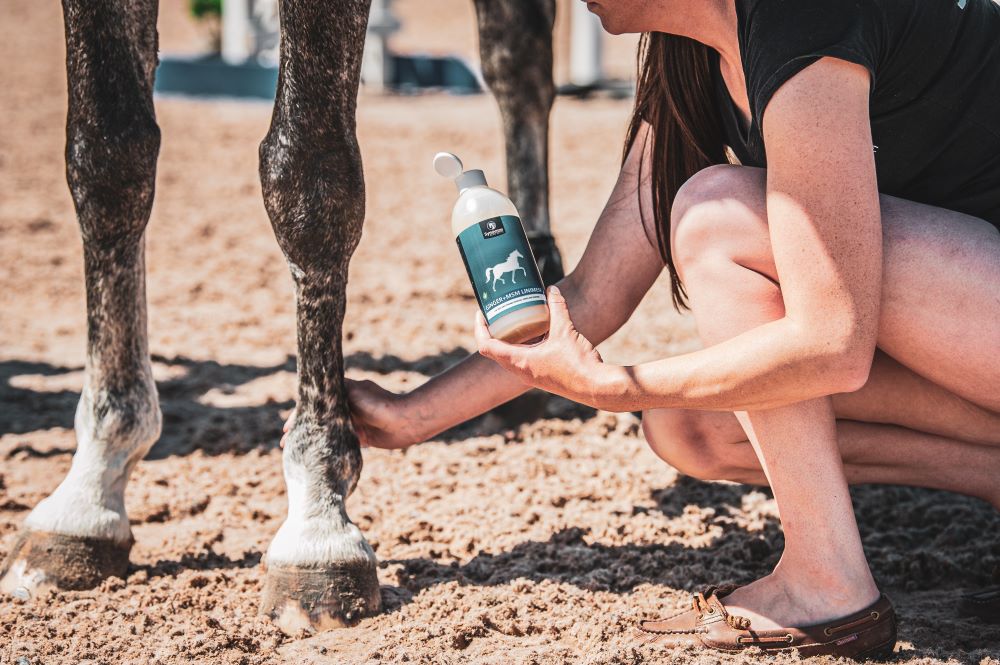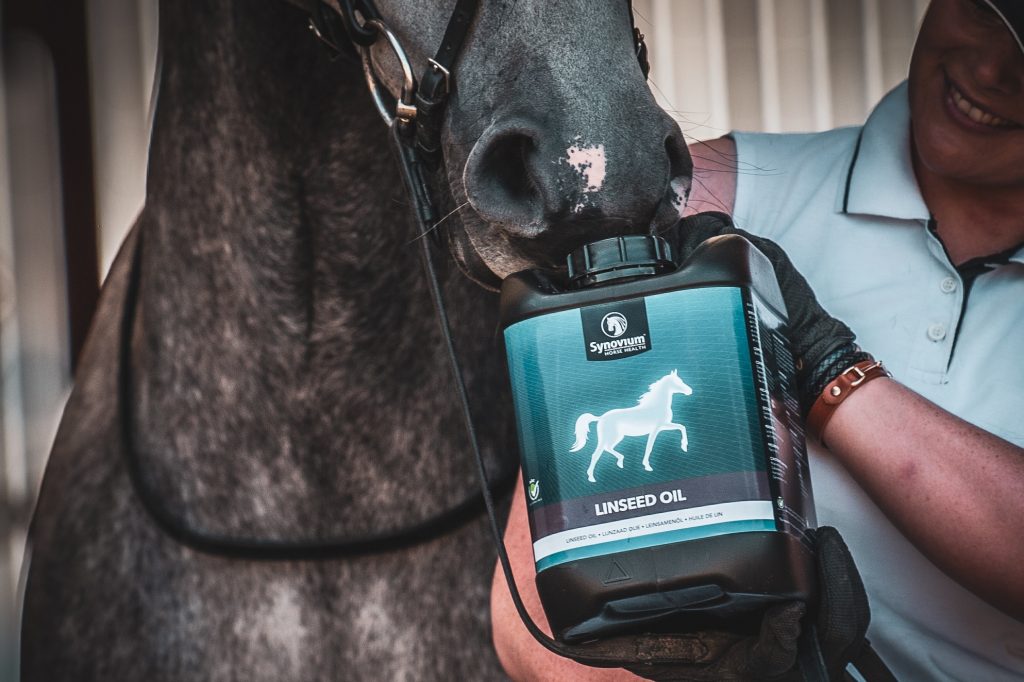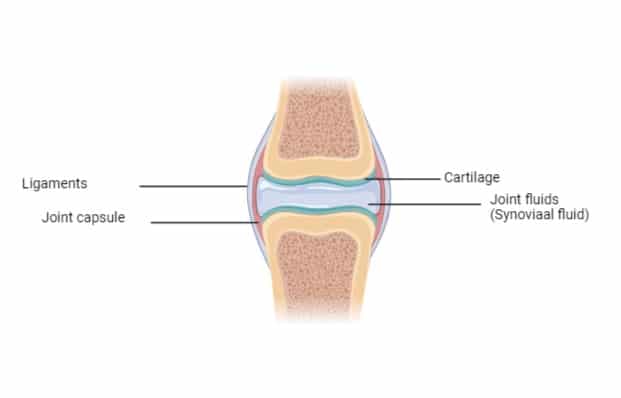Veterinary Article
Nutrition to Support Tendons and Joints
Figure 1 The joint consists of the joint capsule, ligaments, synovial fluid and cartilage. Two bones meet in the joint. The joint is important for the movement of the body.
The horse’s tendons
Tendons form a connection between muscles and bones in the body. The forces generated by the muscle are transmitted through the tendon and attached to the bone. It is a crucial component for bodily movement.
The tendons in the body are composed of 50-60% water 3. However, tendons have a fibrous structure and a tendon is made up of longitudinal fibre bundles composed mainly of Collagen 4. Collagen Types I and III are most common in the tendon. The other types are present in the tendon, but in lesser amounts than types I and III 5,6.
It is crucial for a horse to have healthy tendons and joints to achieve its best athletic performance. Tendons and joints are an essential part of the body’s movement mechanism. Heavy and intense exercise can stress tendons and joints. Injuries or wear and tear affect the horse’s movements and suppleness.
Therefore, tendon injuries and joint problems are also some of the most common conditions in the horse that affect the horse’s ability to perform. In addition, tendon injuries or joint problems can cause a lot of pain which affects the horse’s well-being and health. The addition of the right nutrients provides the horse with the necessary support and promotes the maintenance of healthy tendons and joints.
The Horse’s Joint
The joint is part of the body where two (or more) bones connect and allow the bones to move. Therefore, the joints are essential for enabling movement. The joint is designed to absorb and transfer strong forces, primarily when in motion 1.
In addition, the anatomy of the joint allows the bones that come together in the joint to move smoothly and separately from each other 1. The joint consists of a joint capsule, ligaments, synovial fluid and cartilage (Figure 1).
The joint capsule consists of relatively stiff and fibrous material. This part of the joint is mainly important for stability and contains nerve endings that are important for sending information about the position of the joint to the brain 2.
The inside of the joint capsule consists of a layer which is two to three cells thick and is important for the synovial fluid in the joint. This layer consists of so-called A or B cells 1. The B cells can produce Hyaluronic acid, which is an essential component for joint fluid and cartilage 1.
Joint fluid, or synovial fluid, is where nutrients pass through which are important for the cartilage located in the joint 2. The synovial fluid has a lubricating function and ensures smooth movements of the joint 2.

Using supplements for healthy tendons and joints
To keep a horse’s tendons and joints healthy and prevent serious complaints, supplements containing tendon and joint-supporting ingredients are used to keep the horse moving smoothly for as long as possible. In addition, supplements are also used to reduce (pain) symptoms caused by, for example, injuries or wear and tear and to support and promote the healing process.
Research shows that the use of the ingredients Collagen, Methyl Sulfonyl Methane (MSM), Chondroitin, Glucosamine and Hyaluronic Acid have a positive effect on the horse’s tendons and joints. The use of Omega-3 fatty acids has an anti-inflammatory effect and offers support to horses suffering from chronic inflammation.
Collagen
As mentioned earlier, Collagen is found in the tendons, as well as in the horse’s joints. Research has shown that Collagen plays a role in the healing process of the tendons when the horse has a tendon injury 6.
In addition, there is a link between the development of osteoarthritis and the breakdown of Collagen in the joints which has an effect on the horse’s mobility. Collagen is thus an important component for healthy tendons and joints 7,8. Dobenecker et al. (2018) showed through a study that supplementation of Bioactive Collagen Peptides, a mix of specific Collagen peptides, has a positive effect on the horse’s mobility. The horses during this study had been pre-diagnosed with mild to moderate osteoarthritis.
Results showed that BCP supplementation provides support to the horse, with osteoarthritis, and has a positive effect on the horse’s mobility 9. Synovium Agility Horse contains BCP, with amounts and daily dosage based on the results of Dobenecker et al. (2018).
MSM, Glucosamine & Chondroitin
Methyl Sulfonyl Methane, also known as MSM, is an organically bound sulphur that is important for amino acid and protein synthesis in the body.
Research has shown that MSM functions as an antioxidant in the body 10, allowing MSM to neutralise free radicals generated by oxidative stress due to intense exercise. In addition, research suggests that MSM also has an anti-inflammatory function in the body 11.
Supplements often contain MSM in combination with Glucosamine and Chondroitin for optimal support, such as Synovium Motion JMT.
However, MSM can also be added as a separate supplement to the horse’s diet. Synovium MSM Optimal-C contains MSM combined with Vitamin C.
Chondroitin and Glucosamine are both found in cartilage and are important components for maintaining healthy cartilage and joints 12. Supplements that aim to support joints often contain a combination of these two ingredients.
Several studies have been conducted to measure the effect of these endogenous ingredients. A study conducted by Rodgers (2006) showed that supplementing Chondroitin and Glucosamine reduced the number of injections administered, to treat joints and improve mobility, after a period of time.
More recent research showed that Chondroitin and Glucosamine both have the potential to support horses diagnosed with osteoarthritis and reduce symptoms.
Omega-3 fatty acids have an anti-inflammatory effect in the body. Damage to the tendon or joints causes an inflammatory response in the body.
Studies show that administration of Omega-3 fatty acids to the horse’s diet has a positive significant effect on inflammation markers in the body 14. Manhart et al. (2009) showed through research that supplementation of Omega-3 fatty acids reduced inflammation in the joints and, as a result, was likely to also have reduced pain caused by this inflammation.
As a result, Omega-3 fatty acids offer support to horses suffering from tendon injuries or joint problems that cause inflammation. Omega-3 fatty acids are mainly found in Linseed oil.
Several ingredients have a positive effect on the health of the horse’s joints and tendons. In addition, these ingredients can be combined for optimal support. The choice of ingredients depends mainly on the type of support the horse requires. If you need help and advice from our vets, please get in touch via our contact page.

References
1. van Weere, P.R., Brama, B. (2001) Physiology and pathology of the equine joint. Pferdeheilkunde, 17(4):307-318.
2. de Gauw, J.C. (2011) Molecular monitoring of equine joint homeostasis. Veterinary Quarterly, 31(2):77-86.
3. Shojaee, A. (2023) Equine tendon mechanical behaviour: Prospects for repair and regenediet applications. Veterinary Medicine and Science, 9(5):2053-2069.
4. O’Brien, C., Marr, N., Thorpe, C. (2021) Microdamage in the equine superficial digital flexor tendon. Equine Veterinary Journal, 3(3):417-430.
5. Birch, H.L., Sinclair, C., Goodship, A.E., Smith, R.K.W. (2014) Chapter 9 – Tendon and ligament physiology. In: Hinchcliff, K.W., Kaneps, A.J., Geor, R.J. (Eds.). Equine Sports Medicine and Surgery. Saunders Elsevier: China.
6. Dahlgren, L.A., Brower-Toland, B.D., Nixon, A.J. (2005) Cloning and expression of type III collagen in normal and injured tendons of horses. American Journal of Veterinary Research. 66(2):266-270.
7. Trumble, T.N., Scarbrough, A.B., Brown, M.P. (2009) Osteochondral injury increases type II collagen degradation products (C2C) in synovial fluid of Thoroughbred racehorses. Osteoarthritis and Cartilage. 17(3):371-374.
8. Coppelman, E.B., David, F.H., Toth, F., Ernst, N.S., Trumble, T.N. (2019) The association between collagen and bone biomarkers and radiographic osteoarthritis in the distal tarsal joints of horses. Equine Veterinary Journal, 52:391-398.
9. Dobenecker, B., Reese, S., Jahn, W., Schunck, M., Hugenberg, J., Louton, H., Oesser, S. (2018) Specific bioactive collagen peptides (PETAGILE®) as supplement for horses with osteoarthritis: A two-centred study. Journal of Animal Physiology and Animal Nutrition, 102: 16-23.
10. Marãn, G., Mũoz-Escassi, B., Manley, W., García, C., Cayado, P., de la Muela, M.S., Olábarri, B., León, R., Vara, E. (2008) The effect of methyl sulphonyl methane supplementation on biomarkers of oxidative stress in sport horses following jumping exercise. Acta Veterinaria Scandinavica, 50(1): 1-9.
11. Usha, P.R., Naidu, M.U.R. (2004) Randomised, double-blind, parallel, placebo-controlled study of oral glucosamine, methylsulfonylmethane and their combination in osteoarthritis. Clinical Drug Investigation, 24(6): 353-363.
12. Rodgers, M.R. (2006) Effects of Oral Glucosamine and Chondroitin Sulfates Supplementation on Frequency of Intra-articular Therapy of the Horse Tarsus. International Journal of Applied Research in Veterinary Medicine, 4(2):155-162.
13. Williams, V.S. (2007) Intraarticular Hyaluronic Acid Supplementation in the Horse: The Role of Molecular Weight. Journal of Equine Veterinary Science, 27(7):298-303.
14. Manhart, D.R., Scott, B.D., Gibbs, P.G., Coverdale, J.A., Eller, E.M., Honnas, C.M., Hood, D.M. (2009) Markers of Inflammation in Arthritic Horses Fed Omega-3 Fatty Acids. The Proffesional Animal Scientists, 25(2):155-160.


